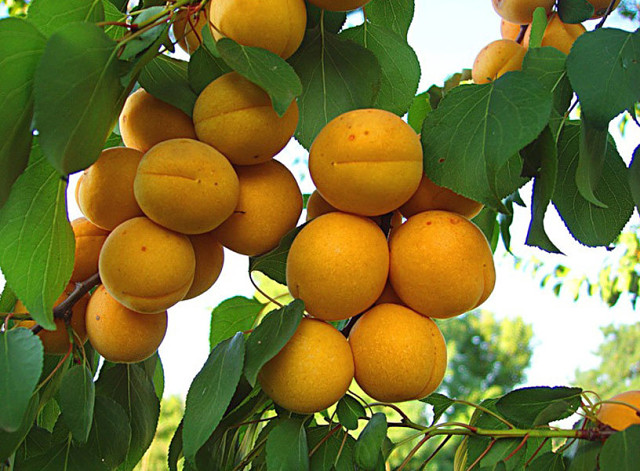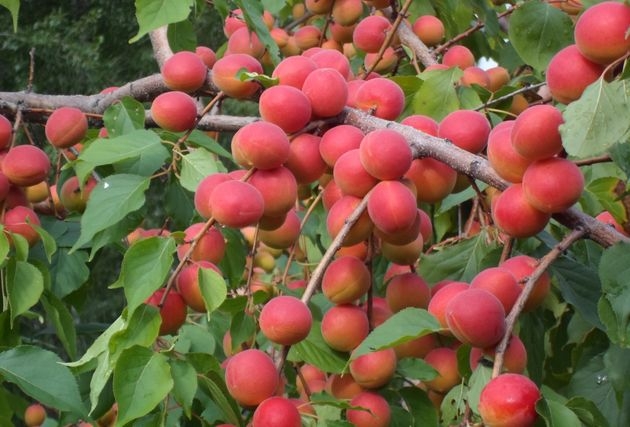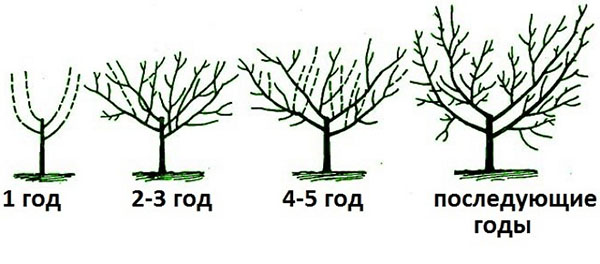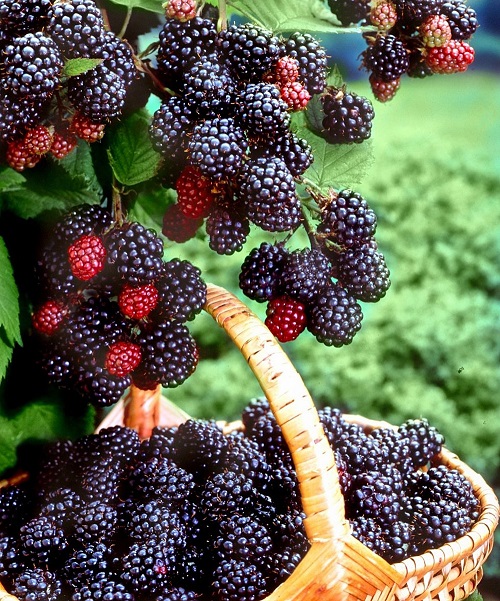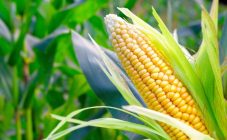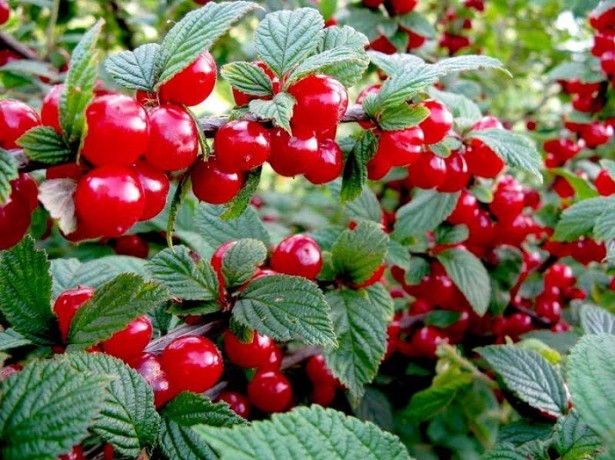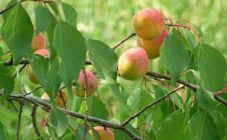Content:
Until recently, the cultivation of exotic southern apricots in Siberia seemed like a fantastic event. However, breeders - gardeners of the Siberian region are engaged in the cultivation of this fruit crop and collect a bountiful harvest of delicious apricot fruits. The taste of Siberian apricots is not much different from their southern "counterparts": they are generally just as juicy and sweet.
Siberian varieties of apricots
In Siberia, it is not an ordinary apricot that grows, but its hybrids, obtained as a result of crossing the familiar apricot culture with a local Siberian variety growing in the taiga. From its wild "progenitor", the hybrid variety has inherited remarkable winter hardiness, which allows it to withstand severe Siberian frosts and difficult climatic conditions.
The successful cultivation of apricots in Siberia depends on the selection of a suitable variety that meets the increased requirements for winter hardiness, disease resistance and fertility. Local breeders managed to breed many new varietal species with the required criteria:
- Sayansky... Winter-hardy, disease-resistant variety, with juicy yellow fruits, reaching a weight of 30 grams. The sweet pulp of ripe orange fruits has a delicate structure and pleasant sourness. Up to 45 kg of delicious apricots can be harvested from one adult tree. The height of the tree reaches 3 meters. A wide crown of medium density with ovoid leaves and a toothed edge.
- Superior... This variety is a real leader among winter-hardy breeds in terms of disease resistance and frost resistance. The tree has a high yield and can produce about 160 kg of large fruits of a delicate orange color with a red-sided blush. The peel of the ripe fruit is covered with many dots of a carmine shade. The pulp is sweet and juicy, medium density.
- Pretty boy... Apricot got such a playful name for its unusual orange "cheerful" shade of fruit with a wide bright blush. The size of ripe apricots is only 20 grams, the taste is sweet and pleasant. This variety is characterized by a high yield.
Practically in any list of Siberian varieties of apricots, there is a fruit culture Siberian apricot, which is widespread not only in the Siberian region, but also throughout central Russia.
The main advantages of Siberian apricot and its description:
- High winter hardiness.
- Unpretentious care.
- Decorative appearance.
This variety is often used as an ideal component of landscape gardening compositions, it is beautiful at any time of the year. In early spring, the apricot tree is shrouded in a cloud of white-pink flowers with a pleasant honey aroma, to which bees flock. In summer it pleases with green foliage with carved edges, and in autumn - with beautiful fruits of yellow color with a green tint and burgundy "blush".
Apricot in Siberia, planting and care:
- Appearance. The Siberian variety of this apricot crop is a low, branchy tree, more like a shrub, growing to a height of 2.5 to 3 meters.
- It is resistant to temperature extremes and equally well tolerates severe frost and hot summer temperatures. Grows wild in the mountainous regions of Siberia, Mongolia, China and in the Primorsky Territory.
- The leaf cover forms after the end of the flowering phase.
- Fruit.Unlike their fruit counterparts, the fruits of the Siberian apricot are inedible due to the content of cyanide-type toxic substances. Fruit ripening begins in the second half of August. The small apricots are only 25 mm long and have an oval, slightly flattened shape. The color is yellow-green.
The benefits and harms of Siberian apricot fruits
Seeds, leaves, bark and ripe fruits are saturated with toxic toxins that pose a threat to human life only in large quantities. Small doses of these substances act exactly the opposite: like a medicine. The apricot kernel contains amygdalin, which is used in asthma medications, is used as an antiseptic and even treats coughs.
Thanks to this substance, bones are used to improve digestion and stimulate breathing. In addition, Siberian Apricot seeds are used to produce high quality almond oil and almond water. In folk medicine, bones are used to treat nervous disorders and skin diseases. Siberian folk healers note the fact of the positive use of tincture of bush leaves containing hydrocyanic acid as a means of destroying cancer cells.
Planting an East Siberian apricot in Siberia in the spring
One of the most popular varieties of fruit crops recommended for growing in the Siberian region is the East Siberian apricot, which has excellent taste and large fruits, a rounded yellow-green hue, and a lateral blush.
To grow this wonderful apricot in the garden, it is recommended to know how to plant an apricot correctly in spring in Siberia:
- Careful site selection. The fruit culture does not take root well on coarse soil that does not allow air and moisture to pass through. Light soil with a slightly alkaline reaction is best suited. In winter, the landing site should not be swept over by snow.
- The tree is best planted in a hilly area or on a mountainside.
- The East Siberian variety is ideally suited to well-lit areas, protected from through cold winds.
- The groundwater level of the site should not exceed 2.5 meters.
Although many gardeners prefer a different way of cultivating apricot and grow it specifically from the stone. It is recommended to plant the seeds in spring or autumn in small furrows, 5 to 7 cm deep, such a shallow planting contributes to the rapid germination of the seed and the emergence of seedlings. As soon as the plants reach the age of two, they are transplanted to a permanent place in planting pits of standard sizes. In early spring, after the snow melts, the grown seedlings must be pruned, poorly overwintered twigs must be removed and overgrown branches must be shortened. Cut traces are treated with garden pitch.
How best to form a seedling
For the correct formation of a fruit tree, you need to know the rules for pruning seedlings:
- When planting, the core part of the root of an annual apricot is cut off by 15-20 cm.This value is approximate and depends on the size and number of lateral roots, which are also recommended to be shortened to 20 cm.
- In order for the apricot to grow in the form of a trunk, its central conductor is cut in such a way that at a height of more than half a meter there are 12 to 16 buds for the development of “skeletal” lateral branches.
- If the apricot needs to be formed as a shrub, then in this case it is necessary to select several of the most massive shoots, evenly spaced in a circle, and the rest will have to be removed. The left shoots must be shortened by a quarter or a third of the length. There is one nuance in this pruning: the lower branches are cut less, and the upper ones more.
Pruning of young apricot seedlings is carried out in order to form a strong crown of a tree with a uniform circular distribution of lateral "skeletal" branches with strong angles of departure from the trunk.
Agricultural technology of cultivation
Cultivation of Siberian apricots is supposed to be done in two ways: by seedlings and by planting seeds in the form of a stone.
Agrotechnical techniques for planting apricot crops:
- Preparation of a planting pit of standard sizes 60 x 70 cm and a depth of 50 cm.
- The trees should be planted at a distance of at least 5 meters.
- Laying the drainage layer at the bottom of the planting pit.
- Laying 10 liters of a mixture of soil with organic fertilizer in combination with superphosphate and potassium sulfate in an amount of 0.5 grams in a planting hole.
- After the earthen mixture has shrunk, after a few weeks, you can start planting seedlings.
- A small apricot tree must be planted in a planting hole so that its root collar is 5 cm above ground level.
To grow apricot in Siberia from a stone, you can adhere to the following rules:
- Seed planting material is selected from varieties of local Siberian origin.
- The seeds of slightly overripe fruits are thoroughly washed and dried in the shade.
- To cull seeds, the seeds are thrown into the water and get rid of the substandard specimens that have emerged.
- The seeds are best planted at a shallow depth so that the root collar does not rot.
These simple agrotechnical planting and care measures will help to grow a wonderful southern guest - an apricot in Siberian gardens.
